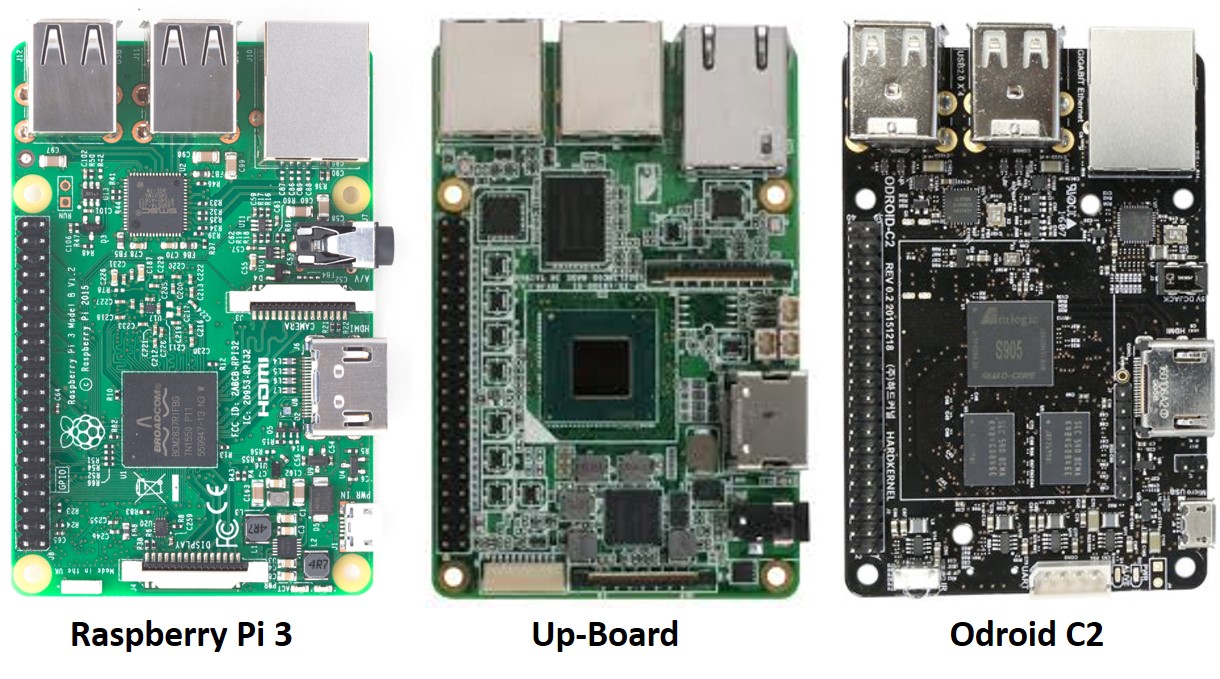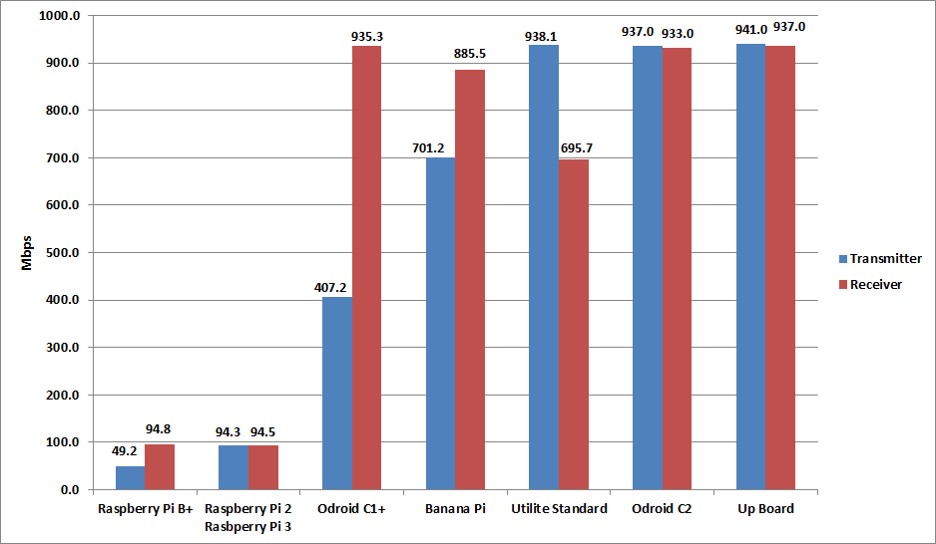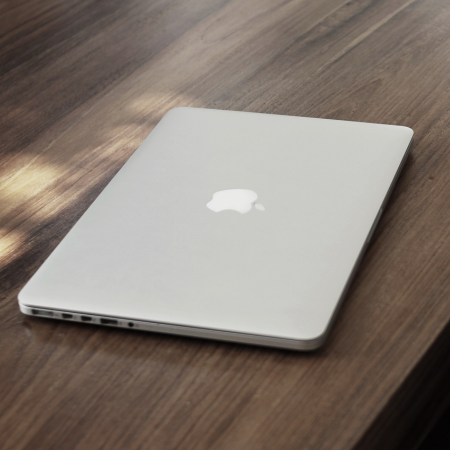I have done iperf performance comparisons in the past between several well known single board computers (SBCs), including with the Raspberry Pi 3. The most popular SBC is the Raspberry Pi, but its limitation is that it has a 10/100 interface, and the maximum traffic it can push is about 95 Mbps. The SBCs with gigabit interfaces I tested in the past, Odroid C1+, Banana Pi, Utilite Standard, couldn’t achieve 1 Gbps as receivers or transmitters of iPerf traffic. Recently, I came across the Odroid C2 and Up Board, which can achieve 1 Gbps iPerf bandwidth in both directions.
The Odroid C2 platform
The Odroid C2 is designed and manufactured by Hardkernel out of South Korea, and the Up Board by UP out of The Netherlands. Here is a comparison of the most important specifications of the two platforms:
| CPU | Memory | Storage | Price | |
| Odroid C2 | ARM Cortex-A53 64 bit (ARMv8) – quad core 1.5Ghz | 2GB | 16 GB (eMMC module or micro-SD card) | $74.85 (board, power, 16GB eMMC) |
| Up Board | Intel Atom 64 bit (x86) – quad core 1.44GHz | 2GB | 16 GB (eMMC onboard) | $110.99 (board, power) |
Although there is an Up Board with 1GB of memory, for this comparison I used the model with 2GB, which is the same as the Odroid C2’s memory.
Comparison of single-board computers
In this picture we see that the Raspberry Pi 3, Up-Board, and Odroid C2 look very similar to each other and are almost exactly the same size.

The main differentiating feature of the Up Board is that it uses an Intel x86 processor. Most SBCs have ARM CPUs, with the Up Board as one of the few with an x86 CPU. One of the benefits of x86 platforms is better driver support and more updates for hardware peripherals (e.g. WiFi, hard drives, etc). The Odroid C2 has removable storage, which makes it easy to upgrade. The Up Board has onboard eMMC and the only way to add storage would be via a USB storage device. The price in the last column includes the boards and the necessary peripherals needed to work. We can see that the Up Board is about $35 more expensive than the Odroid C2.
Iperf Performance
When it comes to iPerf performance, the two boards are effectively equivalent as shown in the bar graph. I included iPerf performance from some other SBCs for comparison.

The first generation of Raspberry Pi can’t saturate its 10/100 interface, but the Raspberry Pi 2 and 3 are able to get almost 100 Mbps. The Odroid C1+, Banana Pi, and Utilite Standard all have gigabit interfaces, but none of them can achieve gigabit performance when they are both receivers and transmitters of the iPerf traffic. In the last column, we can see that the Odroid C2 and Up Board are able to almost saturate their gigabit interface in both directions.
Conclusion
If you are looking for a compact, low-cost endpoint to run gigabit iPerf tests, the Odroid C2 and Up Board are two of the best options I have seen out there. As I get my hands on new platforms and run new tests, I’ll be updating this post with new performance figures.





